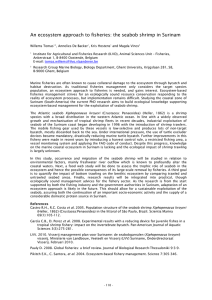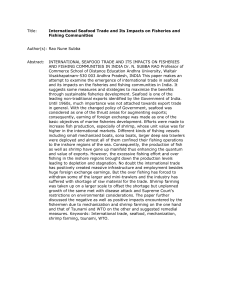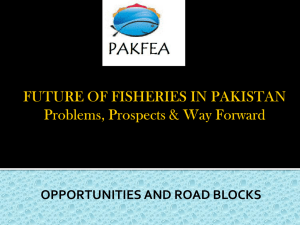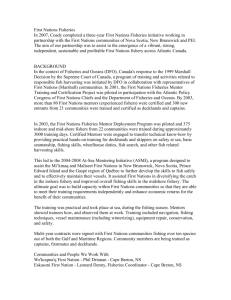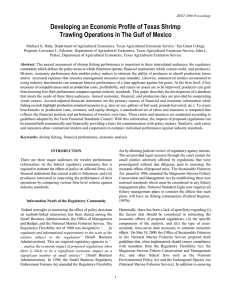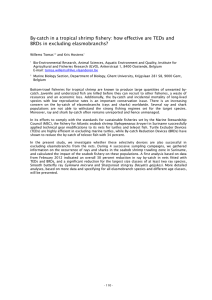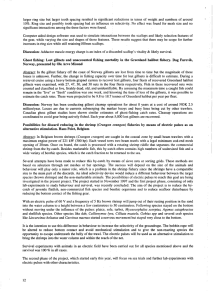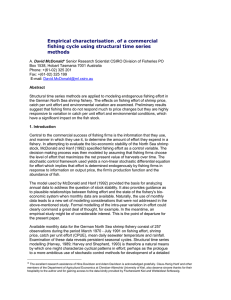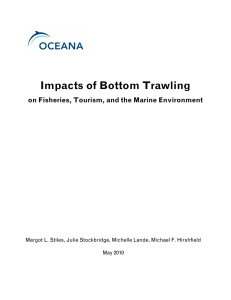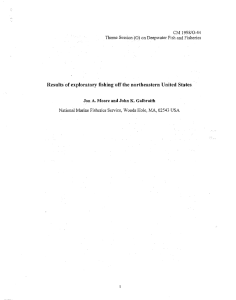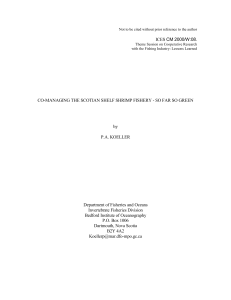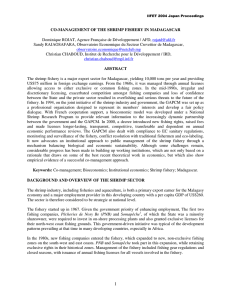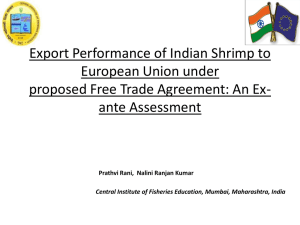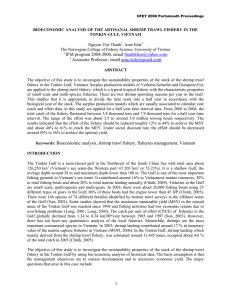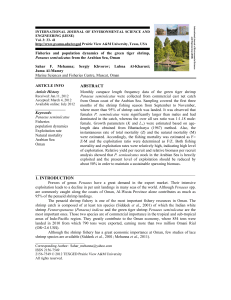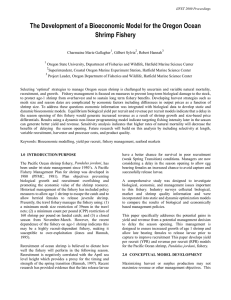An ecosystem approach to fisheries: the seabob shrimp in Surinam Tomas Willems
advertisement
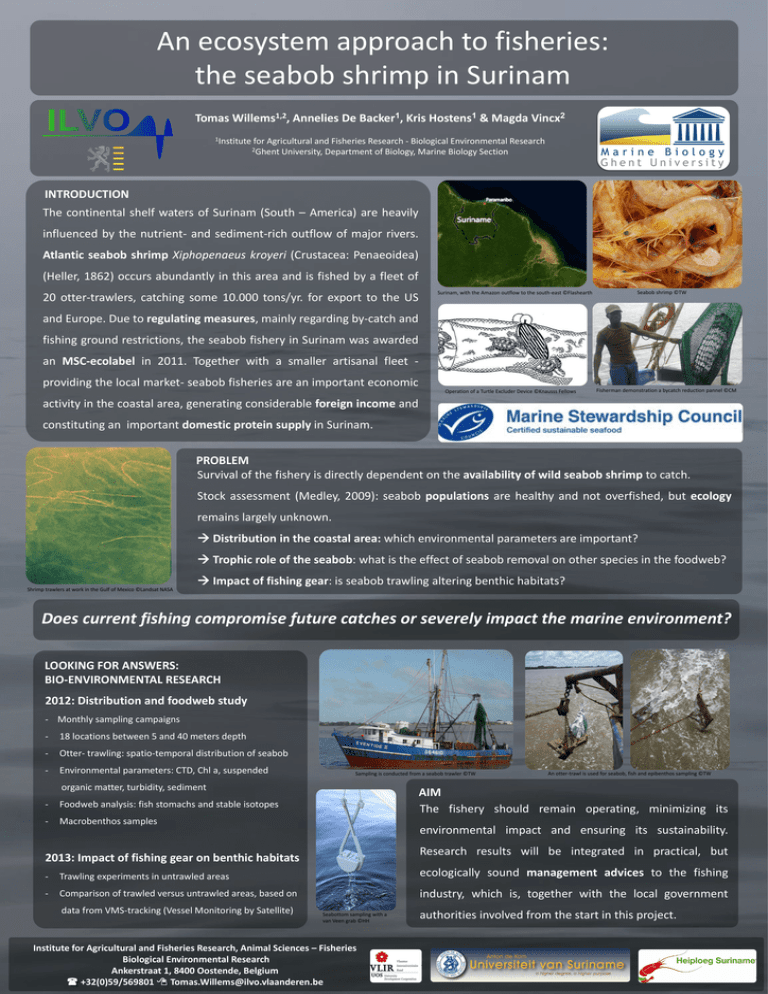
An ecosystem approach to fisheries: the seabob shrimp in Surinam Tomas Willems1,2, Annelies De Backer1, Kris Hostens1 & Magda Vincx2 1Institute for Agricultural and Fisheries Research - Biological Environmental Research 2Ghent University, Department of Biology, Marine Biology Section INTRODUCTION The continental shelf waters of Surinam (South – America) are heavily influenced by the nutrient- and sediment-rich outflow of major rivers. Atlantic seabob shrimp Xiphopenaeus kroyeri (Crustacea: Penaeoidea) (Heller, 1862) occurs abundantly in this area and is fished by a fleet of 20 otter-trawlers, catching some 10.000 tons/yr. for export to the US Surinam, with the Amazon outflow to the south-east ©Flashearth Seabob shrimp ©TW and Europe. Due to regulating measures, mainly regarding by-catch and fishing ground restrictions, the seabob fishery in Surinam was awarded an MSC-ecolabel in 2011. Together with a smaller artisanal fleet providing the local market- seabob fisheries are an important economic Operation of a Turtle Excluder Device ©Knausss Fellows Fisherman demonstration a bycatch reduction pannel ©CM activity in the coastal area, generating considerable foreign income and constituting an important domestic protein supply in Surinam. PROBLEM Survival of the fishery is directly dependent on the availability of wild seabob shrimp to catch. Stock assessment (Medley, 2009): seabob populations are healthy and not overfished, but ecology remains largely unknown. Distribution in the coastal area: which environmental parameters are important? Trophic role of the seabob: what is the effect of seabob removal on other species in the foodweb? Shrimp trawlers at work in the Gulf of Mexico ©Landsat NASA Impact of fishing gear: is seabob trawling altering benthic habitats? Does current fishing compromise future catches or severely impact the marine environment? LOOKING FOR ANSWERS: BIO-ENVIRONMENTAL RESEARCH 2012: Distribution and foodweb study - Monthly sampling campaigns - 18 locations between 5 and 40 meters depth - Otter- trawling: spatio-temporal distribution of seabob - Environmental parameters: CTD, Chl a, suspended Sampling is conducted from a seabob trawler ©TW organic matter, turbidity, sediment - Foodweb analysis: fish stomachs and stable isotopes - Macrobenthos samples An otter-trawl is used for seabob, fish and epibenthos sampling ©TW AIM The fishery should remain operating, minimizing its environmental impact and ensuring its sustainability. Research results will be integrated in practical, but 2013: Impact of fishing gear on benthic habitats - Trawling experiments in untrawled areas ecologically sound management advices to the fishing - Comparison of trawled versus untrawled areas, based on industry, which is, together with the local government data from VMS-tracking (Vessel Monitoring by Satellite) Seabottom sampling with a van Veen grab ©HH Institute for Agricultural and Fisheries Research, Animal Sciences – Fisheries Biological Environmental Research Ankerstraat 1, 8400 Oostende, Belgium +32(0)59/569801 Tomas.Willems@ilvo.vlaanderen.be authorities involved from the start in this project.
